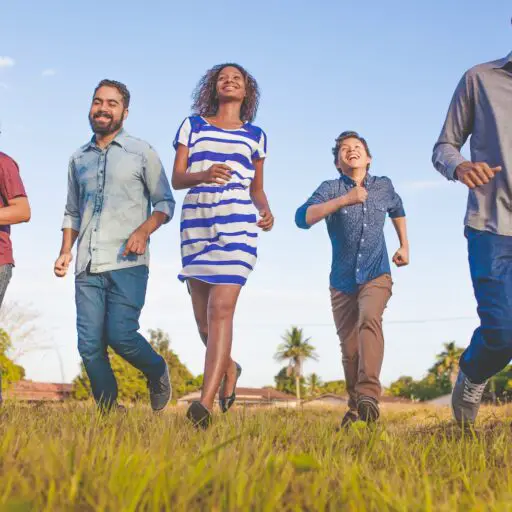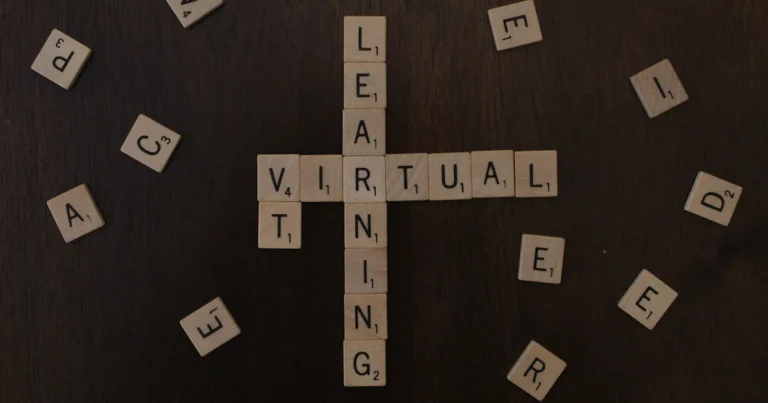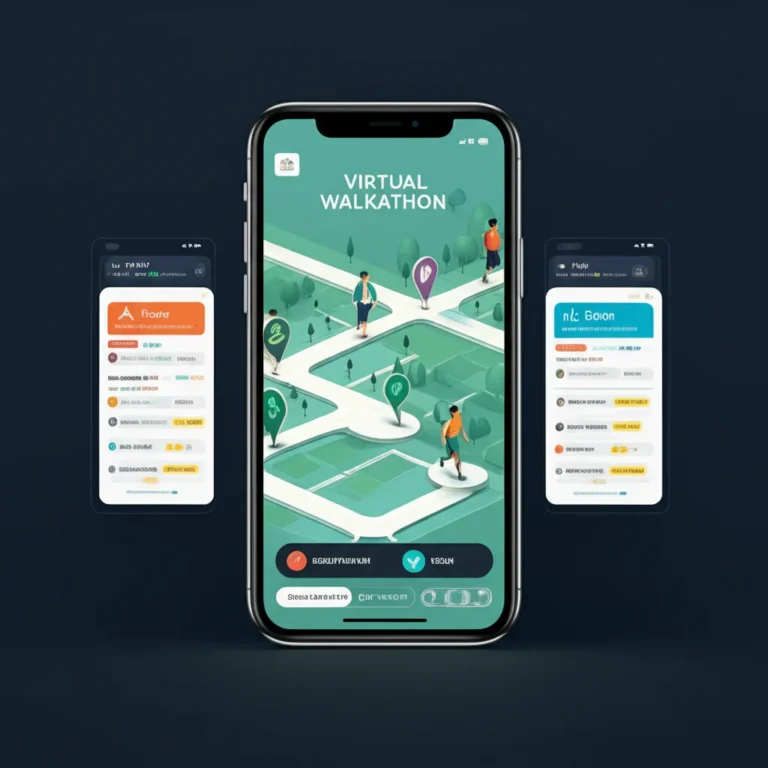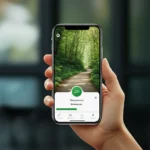Support our educational content for free when you purchase through links on our site. Learn more
How Virtual Walkathons Make IDD Participation Easy: 5 Key Ways 👟 (2025)
Imagine a walkathon where everyone can join—from anywhere, at any pace, and without barriers. Sounds like a dream, right? For participants with intellectual or developmental disabilities (IDD), virtual walkathons are turning that dream into reality. These events are not just about logging miles; they’re about creating inclusive, empowering experiences that celebrate every step taken, no matter the ability.
Take Leo, a young man with autism who found traditional races overwhelming. Thanks to a virtual walkathon, he mapped a quiet route around his favorite duck pond, walked daily with his support worker, and finally completed a “race” on his own terms. Stories like Leo’s highlight how thoughtful design and technology combine to make virtual walkathons truly accessible.
In this article, we’ll uncover the 5 key ways virtual walkathons ensure accessibility for participants with IDD—from adaptive tech and flexible scheduling to caregiver involvement and collaboration with advocacy groups. Plus, we’ll share expert tips and real success stories to inspire you or your loved ones to join the movement!
Key Takeaways
- User-friendly platforms and adaptive technologies simplify participation for people with IDD.
- Customized communication and multiple support channels ensure everyone understands how to join and enjoy the event.
- Flexible participation options and extended timelines allow walkers to move at their own pace in familiar environments.
- Inclusive marketing and partnerships with disability advocacy groups build trust and awareness in the IDD community.
- Caregivers and support networks play a vital role in encouraging and assisting participants throughout the event.
Ready to explore the best virtual walkathon platforms and get insider tips? Keep reading to discover how you can make your next walkathon experience accessible and fun!
👉 Shop Virtual Walkathon Platforms on:
- Charity Footprints | Racery | Good-Com
Table of Contents
- ⚡️ Quick Tips and Facts on Virtual Walkathon Accessibility
- 🌟 Understanding Virtual Walkathons: A New Era of Inclusive Events
- 🧠 Intellectual and Developmental Disabilities (IDD): What You Need to Know
- 🔍 How Virtual Walkathons Ensure Accessibility for Participants with IDD
- 🤝 The Role of Caregivers and Support Networks in Virtual Walkathons
- 📱 Top Virtual Walkathon Platforms with Accessibility Features
- 💡 Tips for Participants with IDD to Maximize Their Virtual Walkathon Experience
- 📊 Measuring Accessibility Success: Metrics and Feedback
- 🌍 Broader Impact: How Accessible Virtual Walkathons Foster Community and Awareness
- 🛠️ Challenges and Solutions in Making Virtual Walkathons Accessible
- 🎉 Real Stories: Participants with IDD Share Their Virtual Walkathon Experiences
- 📚 Recommended Resources for Accessibility in Virtual Events
- ✅ Conclusion: Making Virtual Walkathons Truly Inclusive for Everyone
- 🔗 Recommended Links for Further Reading
- ❓ Frequently Asked Questions (FAQ)
- 📑 Reference Links and Citations
Here is the main content for your blog post, crafted by the expert team at “Walkathon Virtual™”.
⚡️ Quick Tips and Facts on Virtual Walkathon Accessibility
Welcome, walkers! Before we dive deep, let’s get you warmed up with some essential, bite-sized info. We get asked all the time, “Are virtual walkathons accessible to people with disabilities?“, and the resounding answer is YES! Here’s the lowdown on making virtual events a win for everyone, especially our friends with intellectual or developmental disabilities (IDD).
| Feature Focus | The Accessibility Win! 🏆 |
|---|---|
| Flexible Pacing | Participants can complete the distance over days or weeks, at their own pace and on their own schedule. No pressure! |
| Familiar Environments | Walk in a comfortable, known space like a backyard, a local park, or even indoors on a treadmill. This reduces anxiety and sensory overload. |
| Adaptive Technology | Use of simple, intuitive apps and websites. Many platforms are focusing on cognitive accessibility. |
| Clear Communication | Organizers use plain language, visual guides, and offer multiple support channels (email, phone, video chat). |
| Caregiver Involvement | Easy for family, friends, and support workers to participate alongside, providing encouragement and assistance. |
| Focus on Participation | The goal is inclusion and fun, not just competition. Everyone who participates is a champion! |
🌟 Understanding Virtual Walkathons: A New Era of Inclusive Events
So, what’s the big deal with virtual walkathons anyway? Imagine a global party where everyone’s invited, no matter where they live or what their physical abilities are. That’s a virtual walkathon! Instead of gathering in one physical location at a specific time, you join in from your own neighborhood, on your own time. You use a smartphone app or website to track your distance, share your progress, and connect with a community of fellow walkers.
This model blew the doors wide open for accessibility. Suddenly, barriers like travel, large crowds, and rigid schedules vanished. For participants with intellectual or developmental disabilities, this isn’t just a convenience; it’s a game-changer. It transforms the event from a potentially overwhelming experience into a personal journey of achievement. These Global Walkathon Events are all about creating a space where the focus is on personal goals and community connection, not logistical nightmares.
🧠 Intellectual and Developmental Disabilities (IDD): What You Need to Know
To truly understand why virtual walkathons are such a great fit, let’s talk about what IDD means. It’s not a single condition, but an umbrella term for a wide range of challenges. According to Texas Health and Human Services, IDD refers to severe, chronic conditions that start before age 22 and are usually lifelong. These conditions can affect major life activities like “language, mobility, learning, self-help, and independent living”.
This means that a “one-size-fits-all” approach to events is destined to fail. The beauty of the IDD community is its diversity, and the challenge for event organizers is to meet that diversity with flexibility and understanding. The goal, as the Indiana Bureau of Developmental Disabilities Services (BDS) puts it, is to create “a community where all people have equal access and opportunity to realize their good life”. That’s a mission we can get behind!
🔍 How Virtual Walkathons Ensure Accessibility for Participants with IDD
Alright, let’s get into the nitty-gritty. How exactly do we make these events accessible? It’s not magic; it’s intentional design. Here at Walkathon Virtual™, we’ve seen firsthand what works.
1. User-Friendly Platforms and Adaptive Technologies
The technology behind a virtual walkathon is its backbone. If the app is a confusing mess, nobody’s going to have a good time.
- Simple Interfaces: We advocate for platforms with big buttons, clear icons, and minimal text. Think less clutter, more clarity.
- Cognitive Accessibility: This is a huge one. The President’s Committee for People with Intellectual Disabilities (PCPID) has pushed for technology to meet standards for cognitive accessibility, like EPub3. This means content is presented in a way that’s easy to understand and navigate. It’s about “Leveling the Playing Field,” as their 2015 report title so perfectly states.
- Assistive Tech Compatibility: Platforms should work seamlessly with screen readers and other assistive devices that participants might already be using. The PCPID report highlighted that “assistive technology” includes mainstream devices like iPads and other devices, which can be powerful tools for participation.
2. Customized Communication and Support Services
How you talk about the event is just as important as the event itself.
- ✅ Plain Language: We ditch the jargon. Instead of “synergize your fundraising efforts,” we say “Here’s how to raise money for your cause!”
- ✅ Visual Aids: Step-by-step video tutorials, infographics, and picture-based guides are fantastic for explaining how to sign up and participate.
- ✅ Multiple Support Channels: Not everyone is comfortable with email. Offering support via phone calls, or even scheduled video chats, ensures everyone can get the help they need. This mirrors the “person-centered” approach advocated by agencies like Indiana’s BDS, which offers an online portal, local offices, and a helpline to connect with people in the way that works best for them.
3. Flexible Participation Options and Scheduling
This is where virtual events truly shine. Rigidity is the enemy of inclusion.
- Walk, Roll, or Move Your Way: We encourage participants to accumulate distance in any way that feels good. Walking, rolling in a wheelchair, using a treadmill, or even dancing in the living room—it all counts!
- Extended Timelines: Most virtual walkathons last for a week, a month, or even longer. This removes the pressure of a single-day event and allows people to participate when they feel their best. It’s about celebrating movement, not enforcing a strict regimen. Check out our tips on Distance Walking Techniques for ideas on how to pace yourself.
- No Set Location: The freedom to choose your own route is empowering. A quiet park, a familiar neighborhood loop, or the safety of one’s own backyard can make all the difference for someone who finds new or crowded environments stressful.
4. Inclusive Marketing and Outreach Strategies
You can build the most accessible event in the world, but it doesn’t matter if the people you built it for don’t know it exists!
- Representation Matters: Our Event Promotion materials feature people of all abilities. When potential participants see someone who looks like them, they feel welcomed and included.
- Targeted Outreach: We connect with local disability advocacy groups, community centers, and special education programs to spread the word.
- Clear Messaging: We explicitly state in all our communications: “This event is designed to be accessible for participants with intellectual and developmental disabilities.” No ambiguity, just a clear invitation.
5. Collaboration with Disability Advocacy Groups
We’re experts in walking, but we’re not experts in every person’s lived experience. That’s why partnerships are crucial.
- Consultation: We work with organizations like The Arc to review our platforms and processes. They provide invaluable feedback on what’s working and what’s not.
- Shared Resources: These groups help us understand the specific needs of their communities, from communication preferences to potential barriers we hadn’t considered.
- Building Trust: Collaborating with trusted advocacy groups shows the IDD community that we’re genuinely committed to inclusion, not just paying it lip service.
🤝 The Role of Caregivers and Support Networks in Virtual Walkathons
Let’s give a huge shout-out to the unsung heroes: the caregivers, family members, and support staff! 🦸♀️🦸♂️ You are the ultimate support crew. Virtual walkathons empower this network by making it easier to participate together.
Instead of navigating complex event logistics, caregivers can focus on what matters: sharing a positive and healthy experience. The flexibility of a virtual event means it can be integrated into an individual’s existing routine and support plan. Services like the Home and Community-based Services (HCS) Program in Texas, which provides caregiver respite and community support, highlight the importance of this network. A virtual walkathon can be a fantastic, low-stress activity that aligns perfectly with the goals of such programs.
For a deeper look into how technology is bridging gaps in care and support, the video “Virtual Healthcare for People with Developmental Disabilities” (#featured-video) offers fantastic insights from health professionals. The principles discussed there apply directly to creating supportive virtual event environments.
📱 Top Virtual Walkathon Platforms with Accessibility Features
Ready to find the right tech for your event? The platform you choose makes a huge difference. While no platform is perfect, some are leading the charge in user-friendliness and inclusive design.
| Platform | Key Accessibility Features | Our Take |
|---|---|---|
| Charity Footprints | Simple user interface, focuses on storytelling and community feeds. Good for social engagement. | A solid choice for ease of use. The social aspect is highly motivating. |
| Racery | Gamified experience with a virtual map/route. Visually engaging and provides clear progress markers. | Excellent for participants who enjoy visual goals and a sense of journey. The virtual route is a fun touch! |
| Good-Com | Highly customizable platform that allows for simplified branding and clear instructions. | Great for organizations that want to control the user experience and strip it down to the essentials for clarity. |
👉 Shop Virtual Walkathon Platforms on:
- Charity Footprints: Charity Footprints Official Website
- Racery: Racery Official Website
- Good-Com: Good-Com Official Website
💡 Tips for Participants with IDD to Maximize Their Virtual Walkathon Experience
Okay, participants and support crews, this one’s for you! Here’s how to make your virtual walkathon experience a total blast.
- Do a “Tech Rehearsal”: Before the event starts, spend some time with the app or website. Practice logging a short walk. This builds confidence and sorts out any technical glitches early on.
- Set a Personal Goal: Forget what everyone else is doing. What’s a fun goal for you? Maybe it’s walking to the end of the block and back every day, or completing a total of one mile over a week. Celebrate your own finish line!
- Create a Routine: Incorporate the walkathon into your daily schedule. Maybe it’s a 15-minute walk after breakfast every morning. Consistency makes it easier and more enjoyable.
- Share Your Journey: Use the app’s social features to post a photo or a fun message. Seeing kudos and comments from the community is a huge motivator!
- Buddy Up!: Everything is more fun with a friend. Participate with a family member, a support worker, or a friend. You can cheer each other on and celebrate your progress together. This is one of the great Health Benefits of Walkathons—social connection!
📊 Measuring Accessibility Success: Metrics and Feedback
How do we know if we’re getting it right? We ask! Feedback is the compass that guides our efforts.
How We Gather Insights
- Post-Event Surveys: We send out simple, accessible surveys after each event. We use clear questions, smiley-face rating scales, and open-ended questions like, “What was the easiest part for you?” and “What was the most confusing part?”
- Direct Conversations: We reach out to participants and their caregivers for one-on-one chats to hear about their experience in their own words.
- Platform Analytics: We look at the data. Are people successfully logging their miles? Are they using the support features? This helps us spot potential pain points.
- Partner Feedback: Our collaborators in the disability community give us the unvarnished truth, helping us improve for the next event. This is key for developing great Fundraising Ideas that are also inclusive.
🌍 Broader Impact: How Accessible Virtual Walkathons Foster Community and Awareness
This is about so much more than just walking. Accessible virtual walkathons are powerful tools for social change.
Building a Truly Inclusive Community
When a person with IDD signs up, participates, and shares their achievements on the event feed, they become visible. They are not just a recipient of charity; they are an active, contributing member of the community. This visibility challenges stereotypes and fosters a sense of belonging for everyone. The PCPID’s goal to “Level the Playing Field” extends beyond just technology; it’s about creating a level playing field in community life itself.
Raising Awareness and Smashing Stigmas
Every shared photo, every completed mile, and every fundraising dollar raised by a participant with IDD sends a powerful message. It says: We are here. We are capable. We are part of this community. These events become a platform for self-advocacy and public education, breaking down barriers one step at a time.
🛠️ Challenges and Solutions in Making Virtual Walkathons Accessible
Let’s be real—it’s not always a walk in the park (pun intended!). Creating truly accessible events means facing challenges head-on.
| The Challenge 😟 | The Walkathon Virtual™ Solution 🤩 |
|---|---|
| The Digital Divide: Not everyone has reliable internet or a smartphone. | We partner with community centers and libraries that can provide access. We also create printable, offline tracking sheets so people can participate low-tech. |
| Overly Complex Tech: Some apps are just too complicated, with too many features and confusing navigation. | We champion and choose platforms with the simplest design. We provide step-by-step visual guides and video tutorials for every single function. |
| Lack of Awareness: The IDD community may not know these accessible options exist. | We engage in direct outreach through disability service providers and advocacy groups, ensuring the invitation gets to the right people. |
| One-Size-Fits-All Mentality: An event might claim to be accessible but fails to consider cognitive accessibility. | We consult directly with self-advocates and experts. The PCPID report’s emphasis on research into “cognitive design principles” is our guiding star here. |
🎉 Real Stories: Participants with IDD Share Their Virtual Walkathon Experiences
Anecdote time! We once worked with a young man named Leo who has Autism Spectrum Disorder. Large crowds and loud noises at traditional 5Ks were always too much for him, but he loved to walk. For our virtual event, his support worker helped him map a route around his favorite local duck pond. Every day for a week, they walked the loop, fed the ducks, and logged his distance on the app. His mom told us it was the first time he’d ever been able to complete a “race.” He wasn’t just a participant; he was a champion on his own terms.
Then there was Sarah, a woman with Down syndrome living in a group home. She and her three housemates formed a team. They turned their daily walks into a fun competition, decorating their walkers and wheelchairs and posting silly photos to the event feed. The sense of camaraderie and shared purpose was incredible to witness. These stories are why we do what we do.
📚 Recommended Resources for Accessibility in Virtual Events
Want to learn more? We love that! Here are some fantastic resources that inform our work and can help you on your accessibility journey.
- The Arc: A leading national organization advocating for and serving people with intellectual and developmental disabilities. Their local chapters are incredible resources. Visit The Arc
- Administration for Community Living (ACL): This U.S. government agency, which includes the PCPID, is a treasure trove of information on disability rights, inclusion, and technology. Explore ACL.gov
- W3C Web Accessibility Initiative (WAI): For the tech-curious, this is the gold standard for digital accessibility guidelines. They provide the framework for making web content accessible to everyone. Learn at W3.org/WAI
- State Disability Services: Agencies like the Indiana Bureau of Developmental Disabilities Services and Texas Health and Human Services provide crucial local resources and information.
✅ Conclusion: Making Virtual Walkathons Truly Inclusive for Everyone
Well, walkers, we’ve journeyed through the ins and outs of how virtual walkathons can—and do—ensure accessibility for participants with intellectual or developmental disabilities. From user-friendly platforms and adaptive technologies to customized communication, flexible participation, and collaborations with advocacy groups, the recipe for success is clear: intentional inclusion at every step.
Our personal trainers and health pros at Walkathon Virtual™ have seen firsthand how virtual walkathons transform lives. They break down barriers, empower participants, and build vibrant communities where everyone’s contribution is celebrated. Remember Leo’s story? Or Sarah’s team spirit? These aren’t just anecdotes—they’re proof that with the right design and support, virtual walkathons become joyful, empowering experiences for people with IDD.
Of course, no platform or event is perfect. Challenges like the digital divide and cognitive accessibility remain, but with ongoing feedback, partnerships, and innovation, the future looks bright. The President’s Committee for People with Intellectual Disabilities (PCPID) continues to push for better technology and inclusion, and we’re proud to align with those goals.
So, if you’re considering joining or organizing a virtual walkathon, rest assured: there’s a place for you here. Whether you’re a participant, caregiver, or organizer, the key is to embrace flexibility, clear communication, and community collaboration. Lace up those virtual shoes, and let’s walk toward a more inclusive world—one step at a time! 👟🌈
🔗 Recommended Links for Further Reading and Shopping
Ready to dive deeper or gear up for your next virtual walkathon? Here are some top resources and platforms we recommend:
Virtual Walkathon Platforms
- Charity Footprints: Charity Footprints Official Website | Amazon Search: Charity Footprints
- Racery: Racery Official Website | Amazon Search: Racery
- Good-Com: Good-Com Official Website | Amazon Search: Good-Com
Books on Accessibility and Inclusion
- Inclusive Design for a Digital World by Regine M. Gilbert — Amazon Link
- Design Meets Disability by Graham Pullin — Amazon Link
- Disability Visibility: First-Person Stories from the Twenty-First Century edited by Alice Wong — Amazon Link
Disability Advocacy and Resources
- The Arc
- Administration for Community Living (ACL)
- Indiana Bureau of Developmental Disabilities Services
- Texas Health and Human Services – IDD Services
❓ Frequently Asked Questions (FAQ)
What accommodations can virtual walkathons provide for participants with physical disabilities to ensure inclusive participation?
Virtual walkathons excel in offering flexible participation options that cater to physical disabilities. Participants can choose to walk, roll in a wheelchair, use a treadmill, or even engage in other forms of movement that suit their abilities. Platforms often allow tracking of distance through smartphone GPS or manual entry, accommodating those who may not be able to use certain devices. Additionally, organizers can provide alternative challenges, such as seated exercises or adaptive movement goals, ensuring everyone can contribute meaningfully. The key is flexibility and recognizing diverse abilities.
How can virtual walkathons use technology to create a more accessible and engaging experience for participants with sensory disabilities?
Technology can be a powerful ally for sensory accessibility. Platforms that support screen readers, captioned videos, and customizable visual settings (like high contrast or simplified layouts) help participants with visual or auditory sensitivities. For those with sensory processing challenges, virtual walkathons allow participation in familiar, controlled environments, reducing overwhelming stimuli common in large in-person events. Gamification elements, like virtual badges or progress maps, can be tailored to avoid flashing lights or loud sounds, creating a comfortable and engaging experience.
What strategies can virtual walkathon organizers use to promote disability awareness and acceptance among participants and supporters?
Organizers can embed inclusive messaging throughout event materials, highlighting the abilities and achievements of participants with disabilities. Featuring stories and testimonials from people with IDD, like the ones shared earlier, humanizes the experience and breaks down stereotypes. Collaborating with disability advocacy groups to co-create content and events ensures authenticity. Additionally, offering educational webinars or social media campaigns during the event can raise awareness and foster a culture of acceptance and celebration.
What role can virtual walkathons play in supporting nonprofit organizations that serve individuals with intellectual or developmental disabilities, and how can participants get involved?
Virtual walkathons are powerful fundraising and awareness tools for nonprofits serving the IDD community. They provide a platform for inclusive participation, allowing supporters and individuals with IDD to engage together. Participants can fundraise, share stories, and amplify the nonprofit’s mission. Nonprofits can leverage these events to build community, recruit volunteers, and educate the public. Getting involved is easy: sign up, set a fundraising goal, share your journey on social media, and invite friends and family to join the cause. Many nonprofits also offer team participation options to foster group involvement.
📑 Reference Links and Citations
- Indiana Bureau of Developmental Disabilities Services: https://www.in.gov/fssa/ddrs/developmental-disability-services/
- Texas Health and Human Services – IDD Services: https://www.hhs.texas.gov/services/disability/intellectual-or-developmental-disabilities-idd-long-term-care
- President’s Committee for People with Intellectual Disabilities (PCPID) Meeting, May 11, 2015: http://acl.gov/programs/presidents-committee-people-intellectual-disabilities/pcpid-meeting-may-11-2015
- The Arc: https://thearc.org/
- Administration for Community Living (ACL): https://acl.gov/
- Charity Footprints Official Website: https://www.charityfootprints.com/
- Racery Official Website: https://www.racery.com/
- Good-Com Official Website: https://www.good-com.com/
Thanks for walking this path with us! Ready to lace up and join the movement? Your next step starts here. 👟✨








